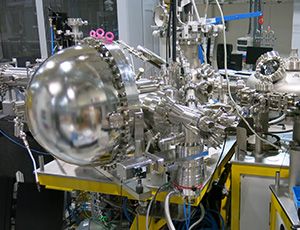In late July 2020 the last components of the Phelix end station were delivered to the SOLARIS Synchrotron Radiation Centre in Kraków. The delivery included a high-resolution hemispherical photoelectron energy analyser and a VLEED spin detector. The state-of-the-art equipment will become available to scientists next year.
The Phelix end station will be exceptional: it will allow scientists to perform circular dichroism measurements (CD-ARPES) and provide direct insights into the spin texture of electron states (SP-ARPES) in the same UHV system and for the same sample. Both of these methods give information about the electron spin, but the interpretation of the CD-ARPES results alone can be challenging. However, the combination of these two methods has a number of advantages allowing for the better understanding of the systems, as it excludes differences in quality between samples and the risk of surface contamination when transferring the sample between experimental systems. Both of these factors significantly affect the obtained results, and the limited control over them reduces the reliability of the research. According to SOLARIS researchers, the Phelix beamline will be one of the very few facilities in the world where such combined measurements can be performed.
In addition to spin measurements, the station will enable mapping the electronic band structure of the samples in all three dimensions (SX-ARPES), performing resonance photoemission measurements (Res-PES), conducting research using angular-integrated photoelectron spectroscopy (XPS, UPS), as well as two types of absorption measurements: total fluorescence and sample current measurement (TFY, TEY).















